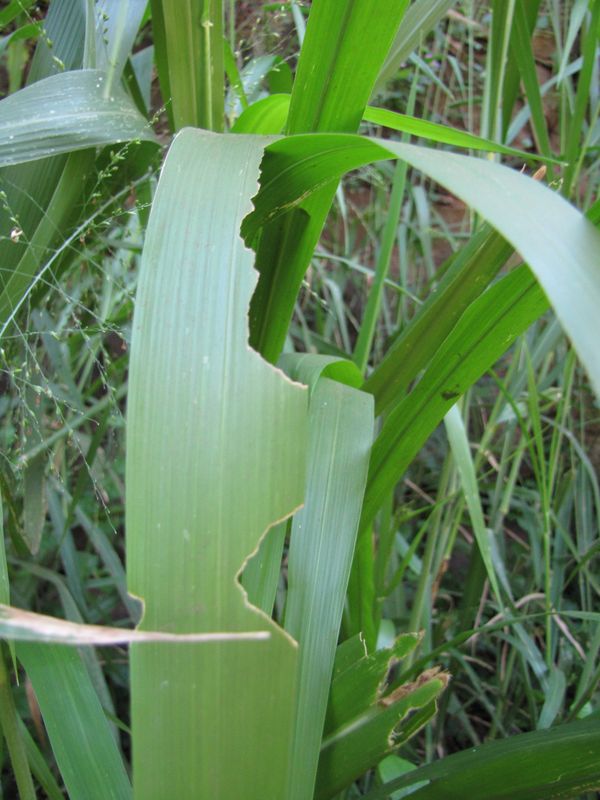Holes or Chewed Leaves: Causes & Solutions
Noticing holes, ragged edges, or chewed leaves on your plant? Learn what's causing the damage and how to stop pests from feasting on your foliage.
When leaves develop holes or look like they've been eaten, the most likely culprits are pests. Certain insects feed on plant foliage, leaving behind visible damage. Identifying the pest responsible is key to choosing the right treatment.

Disclosure: This content includes affiliate links, which means we may earn a commission if you click on a link and make a purchase. As an Amazon Associate, we earn from qualifying purchases. This comes at no extra cost to you and helps offset the cost of running Leafwise. Please read our disclaimer for more info.
Common Causes of Holes or Chewed Leaves
1. Caterpillars and Leaf-Eating Larvae
Many caterpillars, including butterfly and moth larvae, chew irregular holes in leaves.
- Symptoms: Large, uneven holes; entire sections of leaves missing.
- How to Diagnose: Look for caterpillars on the undersides of leaves or nearby droppings (frass).
-
How to Fix It:
- Handpick caterpillars and relocate them using gardening gloves to protect your hands.
- Use insecticidal soap or BT (Bacillus thuringiensis) for severe infestations.
2. Beetles
Beetles like Japanese beetles and flea beetles chew holes in leaves, often skeletonizing them.
- Symptoms: Small, round holes or a lace-like appearance as beetles consume leaf tissue.
- How to Diagnose: Spot beetles on leaves, often in the morning.
-
How to Fix It:
- Shake beetles off plants and dispose of them.
- Apply neem oil or insecticidal soap to repel them.
3. Slugs and Snails
These nocturnal pests leave behind large, irregular holes and slimy trails.
- Symptoms: Large, ragged holes; slime trails on leaves and soil.
- How to Diagnose: Check plants at night or early morning for slugs or snails.
-
How to Fix It:
- Place beer traps or crushed eggshell barriers around plants.
- Hand-remove slugs at night with a flashlight.
4. Grasshoppers
Grasshoppers consume large portions of leaves, especially in warm climates.
- Symptoms: Large, jagged holes or missing sections of leaves.
- How to Diagnose: Spot grasshoppers on plants during the day.
-
How to Fix It:
- Use floating row covers to block them from reaching plants.
- Encourage natural predators like birds and frogs.
5. Leaf-Cutting Bees
Unlike pests, leaf-cutting bees cut out circular sections of leaves but don't harm the plant's health.
- Symptoms: Perfectly round cuts from leaf edges.
- How to Diagnose: Look for circular leaf damage but no other plant distress.
-
How to Fix It:
- No treatment is necessary—these bees are beneficial pollinators.
Preventing Leaf Damage
- Inspect Plants Regularly: Catch pests early before they cause serious damage.
- Encourage Natural Predators: Birds, ladybugs, and frogs help keep pest populations in check.
- Use Organic Pest Control: Neem oil, diatomaceous earth, and insecticidal soap deter leaf-eating pests.
Need More Help?
If your plant's leaves are still being chewed, try the Leafwise Plant Health Diagnosis Tool for a personalized assessment.
